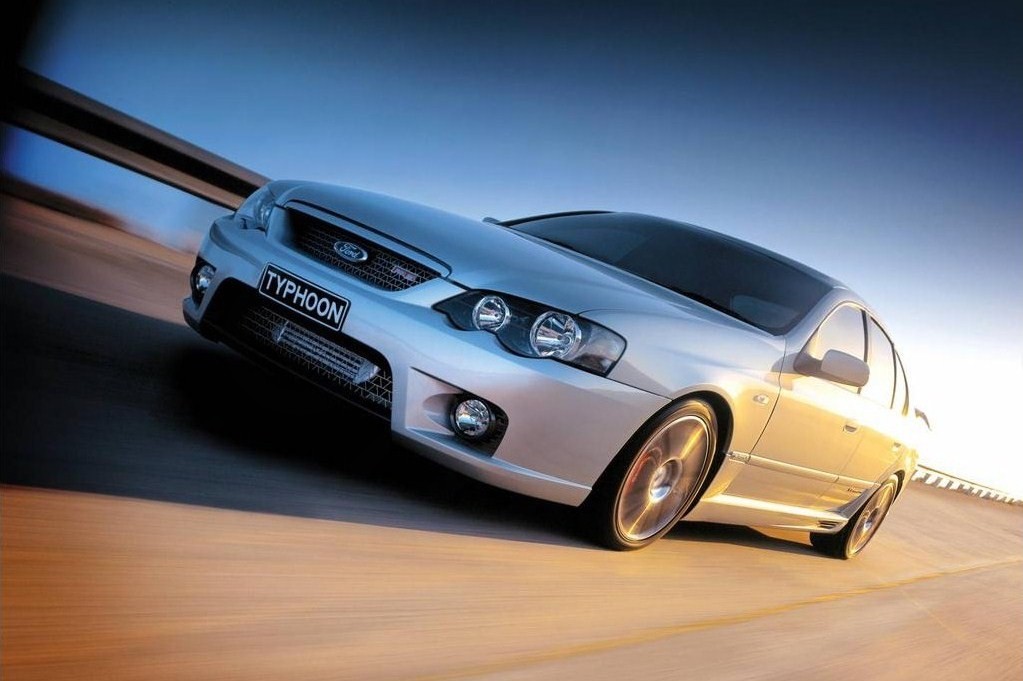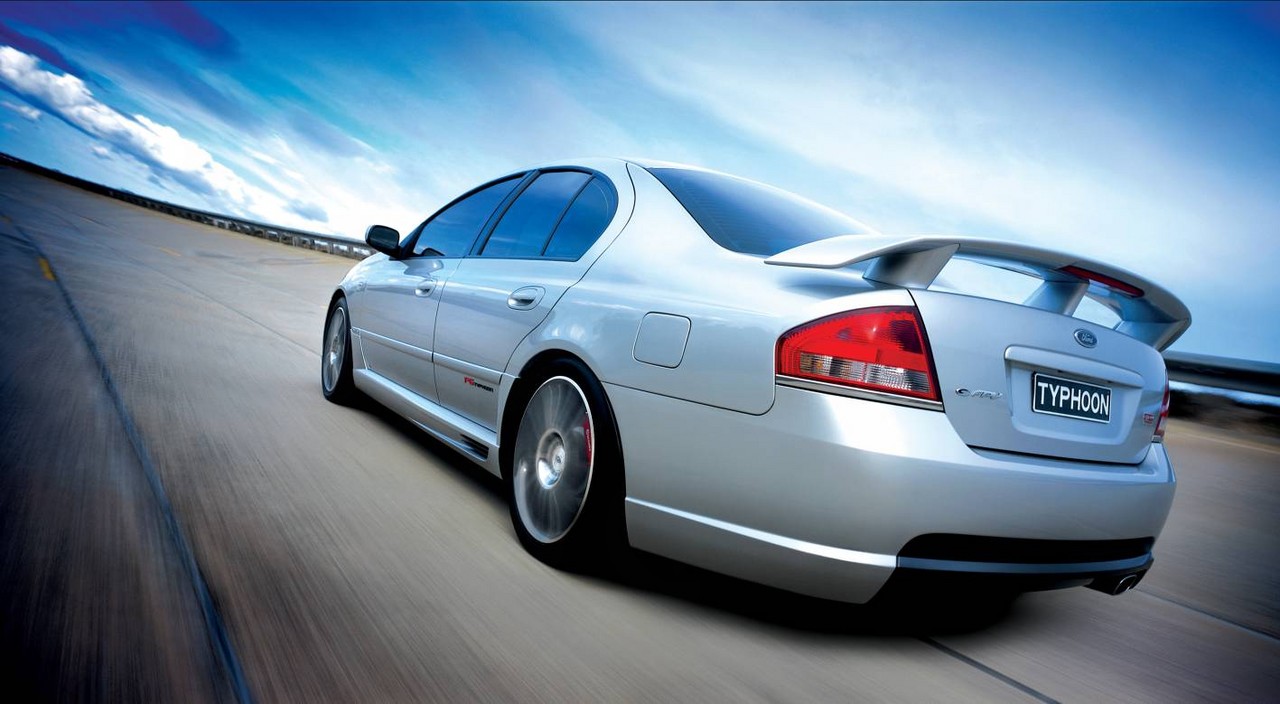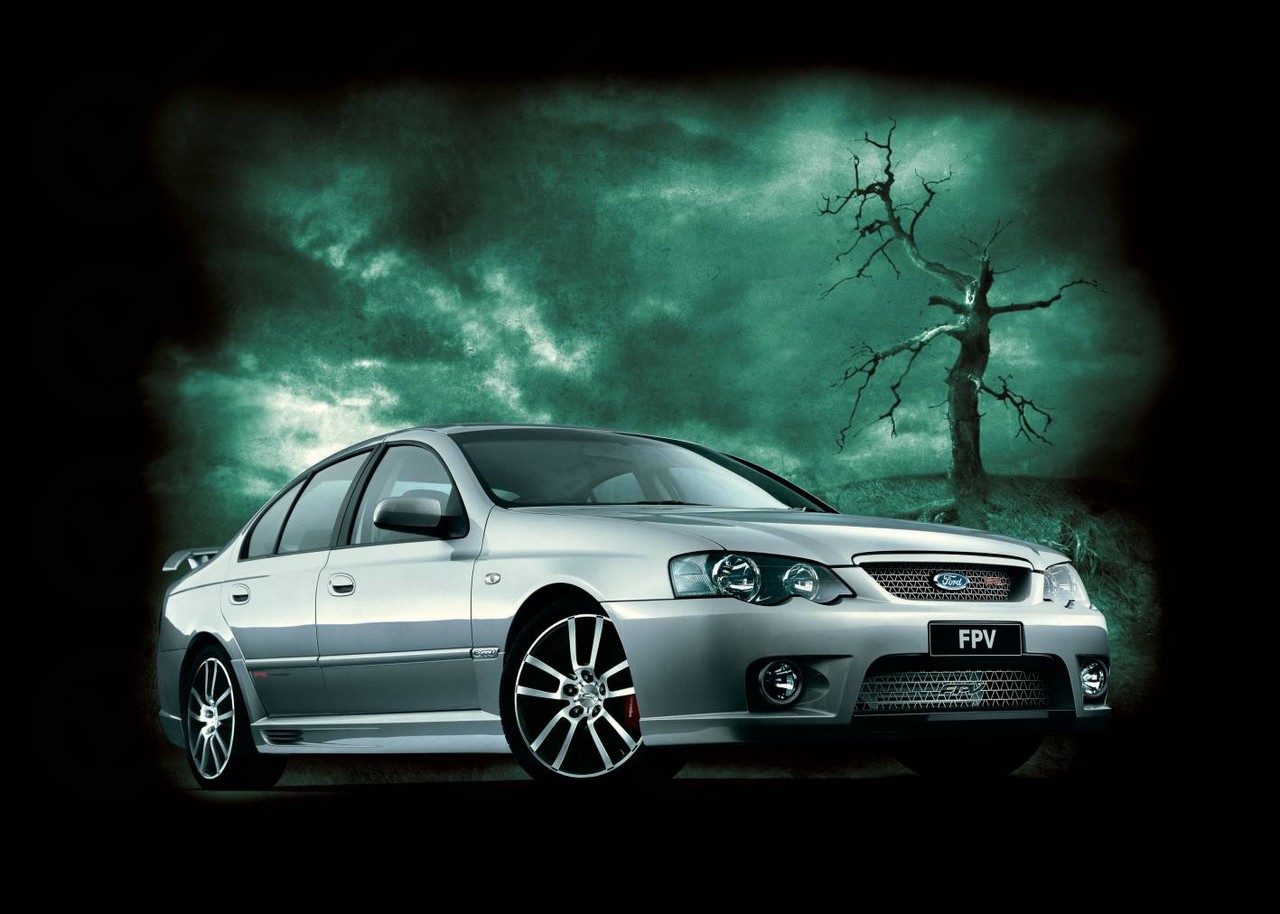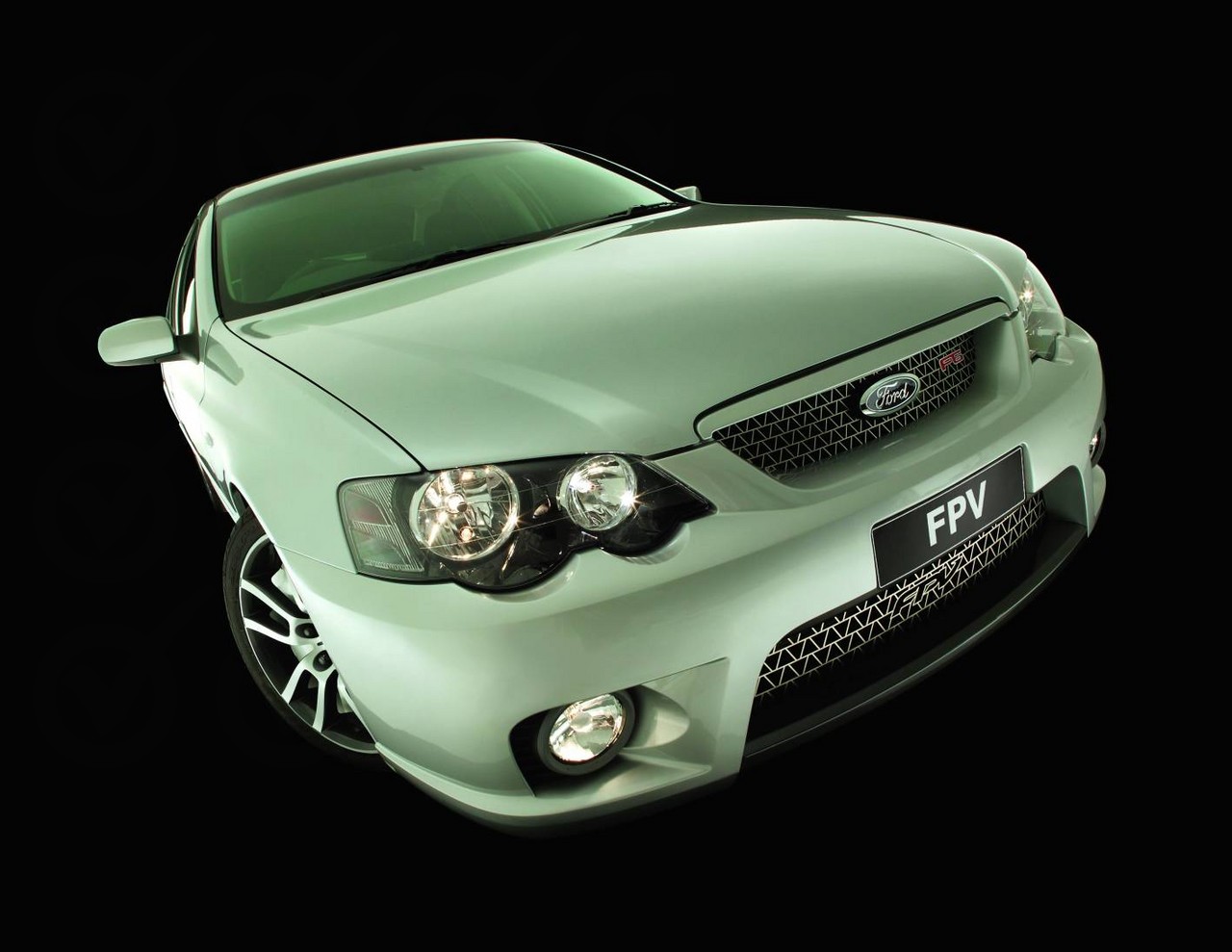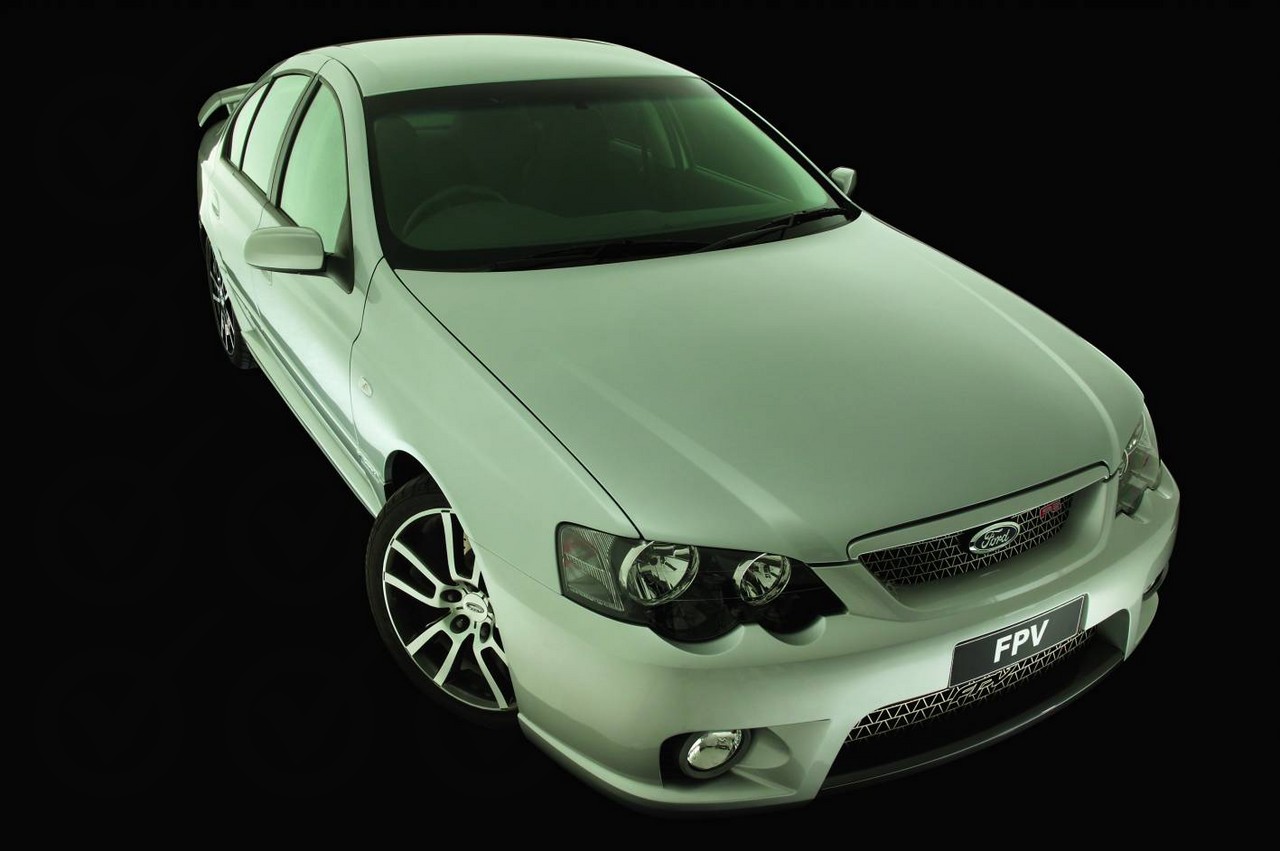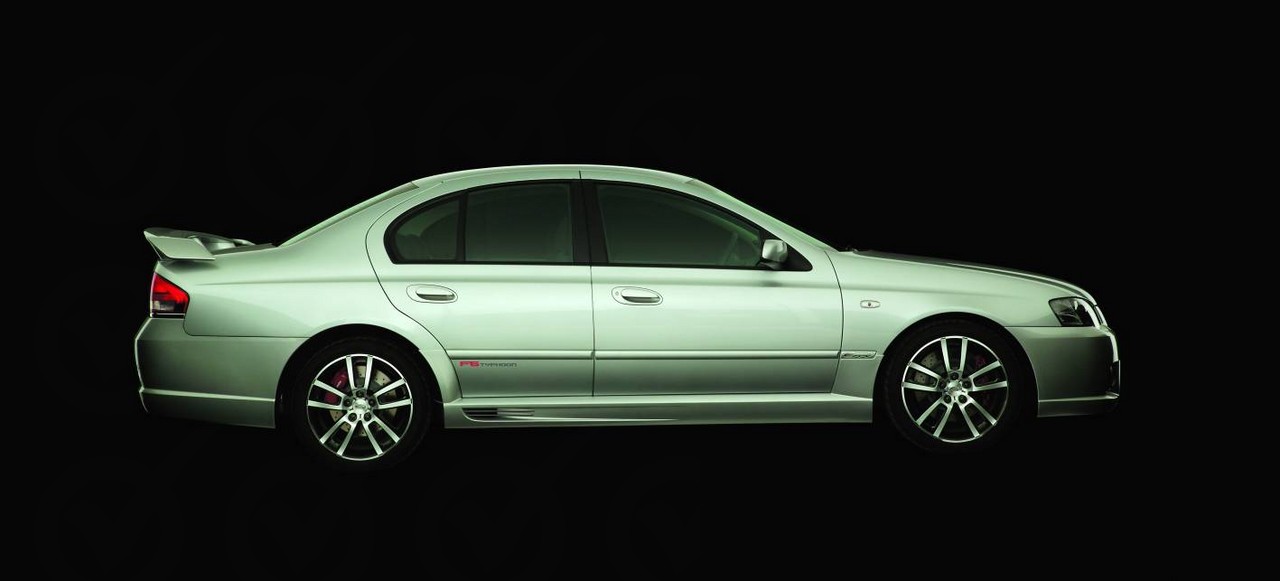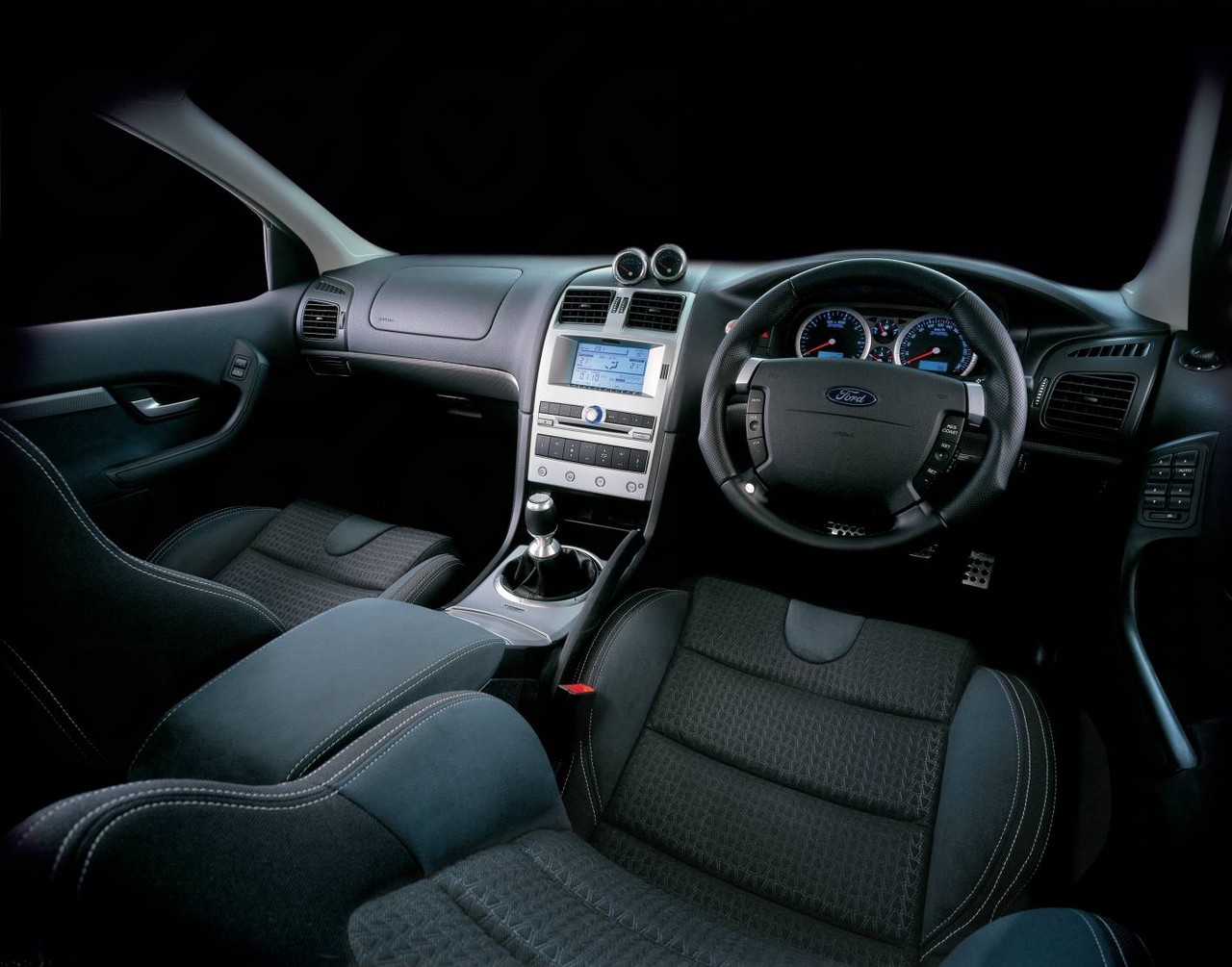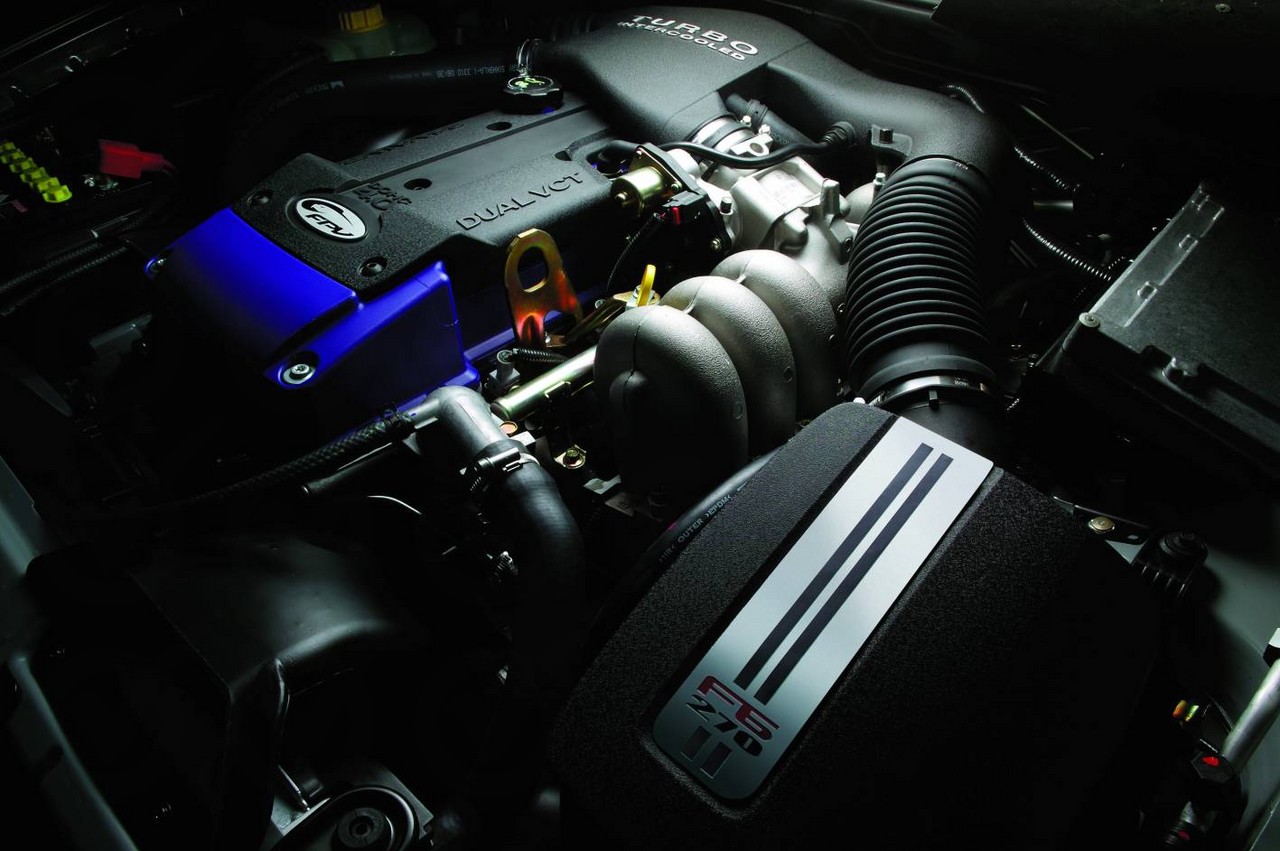
- Powerful 4.0-litre ‘Barra 270T’ turbo engine
- Impressive dynamics
- Accurate steering
- Powerful Brembo brakes
- Tremec T56 a chore to use
- Noticeable turbo lag
- Prone to drivetrain clunks
- Suspension, driveline and road noise
- Low standard of interior fit and finish
Review: FPV BA.II F6 Typhoon (2004-05)
Overview
Released in October 2004, the FPV BA Mk.II (BA.II) F6 Typhoon was a rear-wheel drive, performance sedan. Manufactured in Campbellfield, Victoria, the F6 Typhoon was powered by a 4.0-litre turbocharged six cylinder petrol engine that was mated to a six-speed manual transmission.
FPV F6 270T engine
The F6 Typhoon’s FPV F6 270T engine had a cast iron block, a cast aluminium cylinder head, a Garrett GT35/82R turbocharger which had engine oil-lubricated and water-cooler bearings, an air-to-air intercooler, an electronic single bypass wastegate, double overhead camshafts (DOHC, simplex chain-driven), dual infinitely variable camshaft timing, four valves per cylinder, Duratec-style finger followers, a dual resonance inlet manifold, coil-on-plug ignition, electronic throttle control and a compression ratio of 8.8:1.
Compared to the Barra 240T engine in the BA Falcon XR6 Turbo , the F6 Typhoon engine was tuned by Prodrive and had:
- A 50 per cent larger twelve-core intercooler and dual entry ram airbox that increased boost pressure by 50 per cent to 0.64 bar (9.28 psi);
- Revised internals parts including high-strength valve springs and heavy-duty connecting rods; and,
- A unique FPV oil cooler.
Transmission
The FPV BA F6 Typhoon was fitted with a six-speed Tremec T56 manual transmission and a twin-plate clutch supplied by AP Racing. The close-ratio six-speed Tremec T56 manual transmission had double synchromesh on all forward gears and single synchromesh on reverse, linear bearings in the shift rail, direct linkage shifters, an electronic reverse gear lockout and a final drive ratio of 3.73:1.
Dimensions
The FPV BA F6 Typhoon was 4917 mm long, 1864 mm wide, 1444 mm tall and had a 2829 mm wheelbase; kerb weight was 1770 kg.
Suspension
Like the BA Falcon , the F6 Typhoon had had double wishbone front suspension (with revised mounting points and top mount bushing) and independent rear suspension (IRS) which had three control arms:
- A forged upper control arm;
- A stamped front lower control arm; and,
- A stamped rear lower control arm.
Each control arm had a cross axis ball joint on the wheel assembly end and was attached to the subframe and knuckle. Furthermore, the ‘Control Blade’ was a stamped trailing arm which provided lateral support and acted as a vertical pivot point.
| Engine | Trans. | Peak power | Peak torque | |
|---|---|---|---|---|
| F6 Typhoon | 4.0-litre F6 270T turbo petrol I6 | 6sp man. | 270 kW at 5250 rpm | 550 Nm at 2000-4000 rpm |
Safety equipment
Standard safety equipment for the FPV BA F6 Typhoon included dual front airbags, front side airbags, ABS, electronic brake force distribution, traction control and front seatbelts with pretensioners and load limiters.
Brakes
FPV’s performance brake package for the BA F6 Typhoon consisted of 325 mm by 32 mm grooved and ventilated front brake discs with two-piston calipers and 303 mm by 16 mm rear discs with single piston calipers.
Available as an extra-cost option, the premium Brembo braking package consisted of 355 mm by 32 mm cross-drilled and ventilated front brake discs with four-piston calipers.
Features
Standard features for the FPV BA F6 Typhoon included 18-inch alloy wheels with 235/40 ZR18 Dunlop SP9000 tyres, a 150 watt sound system with seven speakers (including subwoofer), a six-disc CD player and large TFT colour screen, dual-zone climate control air conditioning, contoured sports seats with suede-feel bolsters, a four-way power adjustable driver’s seat, adjustable front seat lumbar support, cruise control, automatic headlights, split and folding rear seats, remote central locking, power mirrors and windows, a height and reach adjustable steering wheel, trip computer and an immobiliser.
The F6 Typhoon was also fitted with a limited slip differential.
Related links
